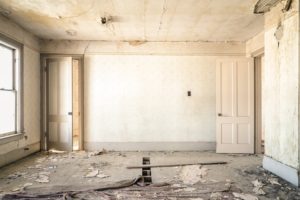
Building codes dictate how hardwood flooring should be installed to ensure safety, durability, and compliance with environmental regulations. Ignoring these rules can lead to costly mistakes, fines, or structural hazards.
For those considering hardwood floor installation Austin, understanding local building codes is essential. These regulations cover everything from material selection to installation methods, ensuring homes meet industry standards. Failure to comply may result in legal issues or the need for costly corrections.
Understanding Safety Standards
Hardwood flooring must meet safety standards designed to prevent accidents and structural failures. Key considerations include slip resistance, fire safety, and load-bearing capacity. Municipal regulations often require specific subflooring materials and moisture barriers to prevent warping and long-term damage.
Additionally, proper installation techniques are necessary to avoid hazards like uneven surfaces or gaps between planks. Contractors must ensure that flooring is level and securely fastened to prevent tripping hazards.
Environmental Regulations and Sustainability
Many cities enforce strict environmental regulations regarding hardwood flooring materials. Some states have banned certain adhesives and finishes due to harmful chemical emissions. Homeowners should look for eco-friendly options, such as sustainably harvested wood certified by the Forest Stewardship Council (FSC).
Proper disposal of old flooring is another legal requirement. Some areas mandate recycling or safe disposal of materials that contain hazardous substances, preventing them from contaminating the environment.
Property Laws and Flooring Installation
Property laws influence how and where flooring can be installed, especially in multi-unit buildings. Homeowners in condominiums or apartments may need approval from their homeowners’ association (HOA) before making changes to flooring. Some HOAs have strict noise-reduction policies that require specific underlayment materials to minimize sound transfer.
Permits may also be required for major renovations. Cities often mandate inspections to ensure compliance with local building codes. Ignoring permit requirements can result in legal disputes or fines.
Common Building Code Violations
Many homeowners unknowingly violate building codes when installing hardwood floors. Some common mistakes include:
- Failing to leave proper expansion gaps leads to buckling or warping.
- Using non-compliant adhesives that emit high levels of volatile organic compounds (VOCs).
- Skipping moisture barriers can cause long-term structural damage.
- Improper subfloor preparation, leading to instability and noise issues.
To avoid these pitfalls, homeowners and contractors should review local building codes before starting any flooring project.
How to Ensure Compliance
Ensuring compliance with building codes requires research and professional guidance. Here are some tips:
1. Consult Local Authorities: Before installing hardwood floors, check with the local building department for specific requirements.
2. Work with Licensed Contractors: Professionals are familiar with code requirements and can help navigate legal considerations.
3. Choose Quality Materials: Choose flooring products that meet safety and environmental standards.
4. Obtain Necessary Permits: Secure permits to avoid fines or legal complications if required.
5. Schedule Inspections: Inspections ensure flooring is installed correctly and meets all safety regulations.
READ ALSO: Upgrade Your Law Office Lighting with SEUS
Final Thoughts
Hardwood flooring adds value and beauty to a home but must be installed according to legal guidelines. Compliance with building codes ensures safety, longevity, and environmental responsibility. Whether you’re a homeowner or contractor, staying informed about regulations will help you avoid costly mistakes and legal troubles.
By following the right steps, you can achieve a stunning and legally compliant hardwood flooring installation that enhances your home for years to come.

 If your home is experiencing a significant restoration (destroying old / constructing new surfaces) where you will see plenty of dust, you have to understand that you will see plenty and a lot of dust. That is especially once the windows have to be closed if your restoration is throughout the winter season.
If your home is experiencing a significant restoration (destroying old / constructing new surfaces) where you will see plenty of dust, you have to understand that you will see plenty and a lot of dust. That is especially once the windows have to be closed if your restoration is throughout the winter season.